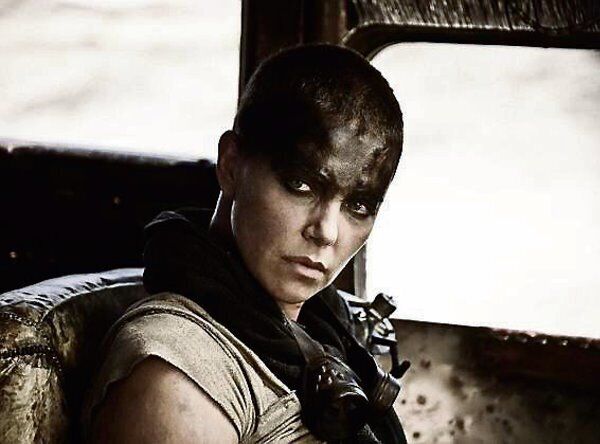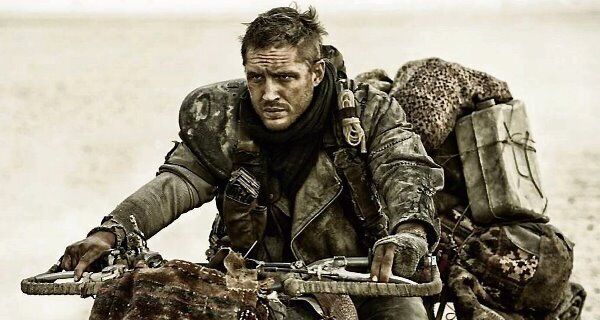Ladies at the forefront in Mad Max

THE pre-publicity around George Miller’s latest installment of his Mad Max series, Fury Road, has been dominated by stories about the director’s commitment to non-computer graphic images (CGI) effects, and the drafting in of Eve Ensler as a consultant.
Both could be signs of a departure from the Hollywood norm, whether from the smoothness and potential of CGI that has, for obvious reasons, seduced moviemakers, or the use of a writer best known for the Vagina Monologues. Hollywood movies are no bastion of feminism, action flicks even less so, with women traditionally reduced to scantily clad, petrified attachments just dying to be rescued by some square-jawed hero.
The British rising star Tom Hardy is charged with bringing the dose of testosterone this time round as Max Rockatansky, but a female cast that includes Charlize Theron, Rosie Huntington-Whiteley and Zoë Kravitz suggests a tempering female influence could be seen. Theron plays Furiosa — neither a girlfriend, nor a victim, but instead a wounded warrior like Max, doing what’s necessary to survive in Miller’s water-starved post-apocalyptic world.

READ NEXT: 10 things to know ahead of the Cannes Film Festival
“There’s a key to Furiosa,” says Miller, “She is still a woman, but her behaviour, out of necessity, is very male. At the beginning of the movie, like everyone in this world, Max is reduced to an animal state. He’s virtually trapped like an animal and he’s got just one instinct — to survive. Furiosa has a higher focus and has to do some tough things. This is a character who is carrying a lot of history and a lot of suffering with her as well. There are very few moments of reflection for her— she’s just got to go and be a warrior. And within the heightened world of Fury Road, we had to make that as real as possible.”
Theron, says the Australian director, was key to realising this. “She has that paradoxical quality,” he says. “She’s unmistakably a woman but she’s not afraid of male behaviour. She has the confidence of being a female, yet doesn’t have that vanity which requires her to look great all the time. Charlize was the one who decided to do the buzz cut because, she said, ‘Why would Furiosa mess with her hair? It wouldn’t be conducive to survival’. Her makeup was only to make her look grimier. Charlize was confident enough not to worry about any of those things, and I think that’s what makes her great.”
Theron’s background as a ballet dancer was a help, too, says Miller. “She’s very physically skilled and incredibly precise. So, she knew exactly what she could or couldn’t do in terms of fighting and stunts.”
DISCOVER MORE CONTENT LIKE THIS
HARDY ANNUAL
Hardy, for his part, was a rugby player, so the two are well matched for the rough and tumble of the Mad Max world.
Miller sees similarities between Hardy and the first Mad Max, Mel Gibson, who became a global star on the back of the original 1979 picture. Like Gibson, Hardy, says Miller, has the kind of charisma that is born out of paradox. “There’s a testosterone-driven masculine energy, but they’re capable of gentleness and softness as well. They can be accessible and lovable, yet mysterious at the same time. It’s an interesting dynamic. Having said that, Tom had his own way into the role and brings something different because, of course, he’s a different human being and a different actor.”

That first Mad Max created an unsparingly savage and nihilistic template. For it, Miller drew on his love of chase movies, and iconic action sequences such as the chariot race in Ben Hur. It was Miller’s first major project, and he was working as a doctor at the time.
“I was working in emergency and saw a lot of road trauma. That obviously affected me,” he says. “Secondly, we couldn’t afford to shoot it modern-day because we’d have to populate the streets with a lot of people and cars and block off roads and so on. So I decided to make it more spare by setting it in the near future after some apocalypse.”
The stark setting, despite its bleakness, captured the minds of audiences all over the world. The key to its success, Miller thinks, was that people everywhere were able to find echoes of their own culture in its neo-mythic storyline.
“One of the tests of a movie is that time will tell you if it impinges at all on any culture, and as I watched that happen, I began to see that it had,” Miller recalls. “In Japan, they called Max a lone Ronin Samurai. In France, they saw the film as a ‘western on wheels’ and Max as the lone gunslinger. And in Scandinavia, some said Max reminded them of the lone Viking warrior, wandering the harsh landscape.”
Miller, who has diverse set of films to his credit, including The Witches of Eastwick and Babe, has written, produced and directed all of the Mad Max movies. Fury Road is no remake, as audiences accustomed to tired retreads might assume, but a new installment in the series. The plot sees Max team up with Furiosa in a bid to escape a savage warlord. Miller says he had the idea about 15 years ago.
“I was walking across an intersection when an idea flashed into my mind that I thought would make a good Mad Max movie. But, by the time I got to the other side of the road, I decided to push that thought away. About two years after that, I was on a long night flight across the Pacific — from Los Angeles back to Sydney where I live — and in that hypnagogic state between wakefulness and sleep, this movie played out. That little idea that started on that street crossing had been festering in some way. It was misty and not at all vivid, but by the time I landed 14 hours later, I realised that I had to sit down and give expression to it.”
QUASI-MILITARY OPERATION
If the logistics around the 1970s Mad Max were about controlling costs to create a convincing world, this time round, Miller had to marshal a quasi-military operation during the shoot.
“It was very similar to conducting a war,” he laughs. “In fact, several of our crew and members of the stunt team had military experience, special forces and such. One of them, who plays a character in the film, had been to Iraq and Afghanistan. He said to me, ‘I don’t want to use the analogy of war, but this feels just like going on a mission. Instead of shooting people, you are shooting film.’ Obviously the human stakes are entirely different, but logistically, the mobility, feeding the troops, communications, keeping everybody safe, all of that has a lot in parallel with a military exercise.”
Eschewing green screens and CGI, Miller’s shoot was almost all outdoors, on location in Namibia — “real world and old school action with real vehicles, every day for over 120 days”. Fury Road, he points out, is not a fantasy film — there are no lasers or flying vehicles. So, he says, why do a CGI car crash when you’ll miss all the randomness of detail that happens when two cars collide? “The way the dust behaves, the way the metal tears off…Why not do it for real?”
It was the same for his actors, he says. “Out there, getting dust in your eyes, feeling the heat of the sun and the cold of the desert in the mornings and at night — it’s a much more immersive experience”. Audiences will be hoping for a similar effect.










